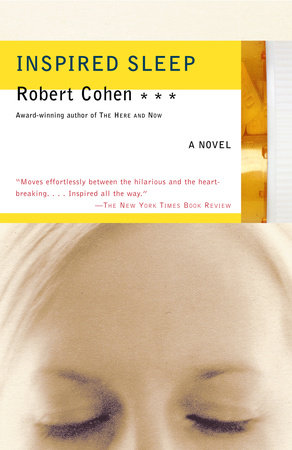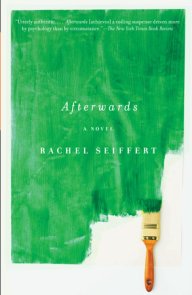READERS GUIDE
The introduction, discussion questions, suggested reading list, and author biography that follow are intended to enhance your group’s reading of Robert Cohen’s Inspired Sleep, a fascinating and provocative exposition on the quandaries of contemporary life.Introduction
Can individual human beings control the condition of their own lives, or are they at the mercy of the long-reaching arms of the pharmaceutical industry and all of its pawns–doctors, research scientists, politicians–who are driven by the desire for power and money? What drives man’s quest to eradicate pain, and to what lengths will people go in pursuit of that goal? What is the relationship between our day-to-day physical condition and our mental or spiritual hopes and dreams? Robert Cohen’s brilliant novel, Inspired Sleep, poses these and other thought provoking questions in an original fiction that is both entertaining and philosophic.It is Boston. The world of university grants, diffident students, professors who are more political than intellectual, and intellectuals who are more na•ve than wise. Everyone has an interest. Research scientists, pharmaceutical companies, doctors who take finders’ fees, the FDA, and the "market" form a tangled web of both competition and conspiracy. Enter Bonnie Saks, an innocent fly about to be caught up in this complicated web. Bonnie is a divorced graduate student with two children, two jobs, exams to grade, and bills to pay, and she is plagued by unrelenting insomnia. Passive and exhausted when it comes to work and love, she cannot finish her dissertation on Thoreau, she is having an on-again, off-again relationship with a former professor, and she is about to embark on a new affair with one of the fathers from her son’s co-op preschool. To top it off, Bonnie discovers she is pregnant. Exiting her obstetrician’s office, the sign for an experimental sleep program beckons her, and she is assigned to the study under the care of the young, promising research scientist Ian Ogelvie. Ian has been faithfully studying his spiders and his Siamese fighting fish, subjects in the clinical studies for the amazing new sleep aid, Dodabulax. Ian is also quietly pursuing his own study in support of "expectancy theory"–the study of placebos. As a result of their brief chance meeting, both Bonnie and Ian experience remarkable personal awakenings, leading to startling and profound discoveries about their individual lives.
Questions and Topics for Discussion
1. From Freud’s view to that of the fictional Howard Heflin, what are the different interpretations of dreams explored in Inspired Sleep? When Bonnie sees her children sleeping she thinks of her dead parents: "At times her own life and that of her children seemed only an effusion of theirs, a pale bloom. A dream not yet enacted" [p. 59]. What view of dreams does her statement invoke? How is this alike or different from the view expressed by Bonnie when she describes art and asks Ian, "Don’t you ever see something that looks completely real and completely dreamlike at the same time? Something by de Chirico, or Magritte, or anyone, really, that’s both meaningful and crazy?" [p. 275] Is the experience of dreaming a metaphor for living, and, if so, what is the implication of Heflin’s assertion that "dreams have no meaning at all" [p. 75]? What would the impact be on psychology or contemporary society if Heflin’s statement were true?
2. Bonnie asks Ian rhetorically, "But who draws the line? Who says what’s okay and what’s pathology? Because there are an awful lot of us in the middle, you know, who don’t know what to call what we’ve got. What’re you going to do, go around treating everybody for everything. . . . I hear they’ve got a pill for shyness now. What next? One for obnoxiousness? For boredom? For . . . love?" [p. 275] "Was there to be a remedy for everything, then? For life itself?" [p. 126] Do you agree with Bonnie’s outrage? Does Inspired Sleep offer any solutions to these questions?
3. How are the written and visual arts contrasted with science in Inspired Sleep? Is Heflin correct when he states, "It’s the poets, not the scientists, who are most adept when it comes to observing the human mind up close" [p. 107]? Is there irony in Ian’s opinion that "one of the many dubious features of the artistic vocation was . . . the abysmal lack of quantitative standards" [p. 223]?
4. During her period of good sleep, Bonnie is described as having "awoke the next morning as someone alive in dream" [p. 288]. Does Bonnie achieve the experience foretold in the epigraph by the Romantic poet Samuel Taylor Coleridge? Taken from his personal notebooks, the epigraph is associated with the famous eighteenth-century Romantic poem, "Kubla Khan," subtitled "A Vision in a Dream." This work is widely acknowledged by critics to have been written while Coleridge was taking opium, the popular nineteenth-century drug which alleviated his many painful ailments and to which he became miserably addicted by the end of his life [sources: A Coleridge Companion, by John Spencer Hill (1984), pp. 61<ETH>87; The Norton Anthology of English Literature, Vol. 2, Fourth Edition (1979), pp. 329-ETH-332]. In light of this information about Coleridge, is Cohen’s choice of epigraph tragically ironic? Does the title of the book, like the fate of Ian’s spiders, also convey this irony?
5. From Ian’s first exchange with Bonnie, when he thinks that the Tinteretto postcard she accidentally drops was "very busy and colorful, not his style at all" [p. 102], to the end when he seems to be repeating Bonnie’s own feelings: "What don’t humans need? Where does it stop?" [p. 366], Ian undergoes a transformation. How does the author develop Ian’s scientific persona in the beginning of the novel and gradually break it down as the novel progresses? How is Ian’s personal transformation an internalized version of Bonnie’s own odyssey? What do they learn from each other? What does Ian mean when he summarizes his relationship with Bonnie: "He had put her to sleep; she in turn had woken him up. The study was over. There would be no more double blindness" [p. 387]?
6. Why does Ian decide to leave the study? Is he a martyr or a failure or just "working really hard to do the right thing" [p. 306]?
7. What does it mean to Bonnie that her pills were placebos? To the industry? To the reader? How might the outcome of the experiment have been different for Bonnie or Ian if the placebo had not had the same effect?
8. When Bonnie relays to Larry that Ian used her for his paper, Larry suggests she sue for "unnecessary pain and suffering," and Bonnie responds cleverly, "Who knows what’s necessary and what isn’t?" [p. 397] Is Bonnie simply restating Ian’s theory: "It’s all that keeps us going. Pain, I mean. Keeps us awake" [p. 235]?
9. Why do Larry Albeit, Donald Erway, Cress, and even Heflin take drugs? Do the drugs provide the relief they are seeking, or for them is it in fact the "taking itself [that is] the cure" [p. 376]?
10. How does Cohen blend the genres of fiction and nonfiction in Inspired Sleep? For example, in Chapter 7, which contains the selections of articles on the pharmaceutical studies of Dodabulax, does the blurring of fact and fiction affect the reader’s nearness to or distance from the events in the novel?
11. In his introduction to The Portable Thoreau, editor Carl Bode summarizes the essence of the American Transcendentalist movement to which Thoreau belonged:
The affirmation of a knowledge beyond that gained through the five senses; the belief in the supremacy of spirit over matter (even to the extent of a "noble doubt" as to whether nature itself existed); the reverence for, and enjoyment of, nature in spite of any doubts as to its final reality; the declaration of a high unselfish standard of personal conduct, and with it, a caustic criticism of the shoddy way in which the business of the world was conducted . . . [p. 16]
Does Bonnie experience any of Thoreau’s Transcendentalism when she says she feels that "[a] membrane had risen between her and the world, or else the membrane that normally separated them had slipped away" [p. 283]? Is Larry Albeit’s desire to be like a plant [p. 293] a parody of Thoreau’s philosophy? Does Cohen perhaps share with Bonnie a love-hate relationship with Thoreau?
12. Frantz’s expectancy theory is defined as follows:
Existence precedes essence. One acts in order to become. Frantz’s placebo studies appeared to confirm this. Chemically speaking, the body’s metabolic changes were often determined by functions of the mind. Action first; then transformation. That was the whole nub of expectancy theory. Maybe even life itself [pp. 99-100].
Does "expectancy theory" have anything in common with Thoreau’s Transcendentalism? How do these two different philosophies affect characters in the novel?
13. In a characteristic outburst, Bonnie says, "I mean, these college towns, really, how do you stand it? All these earnest, overeducated people with their careers and their issues and their meetings that go on forever, their perfect kids who just happen to go to private schools, their potluck dinners with pad thai and tabouli. . . " [p. 26]. Inspired Sleep is filled with critique of "overeducated people"–academics, scientists, pharmaceutical executives, lawyers, etc. What is the tone of Cohen’s critique? What purpose does it serve in the novel? Other than Bonnie’s children and Ian’s sister, Barbara, is anyone left unscathed? Why are these characters exempt from criticism?
14. What is Bonnie looking for or hoping to get out of her relationship with Larry? How does it compare to her other relationships with men? Might she avoid such "painful, embarrassing episode[s]" [p. 393] in the future and, if so, why?
15. From comparing the composition of the classroom to a brain [p. 75], and a receptionist’s cheeks to "plump eggplants" [p. 87], Cohen’s use of metaphor is elaborate and original. How would you characterize his prose style? What other stylistic elements are prevalent?
16. Ian thinks that "even if one’s nature was dogged and thorough and earnest and responsible–all the wrong things, in short, in life if not in research–one had to be true to it" [p. 169]. According to Inspired Sleep, do these characteristics make someone a successful research scientist? Why do Heflin’s and Chu’s ways "work" [p. 44 and p. 48]? Is it likely that Emily Firestone will be a successful research scientist? Are the clinicians like Dr. Siraj and Dr. Preiss portrayed differently than the researchers like Ogelvie, Chu, and Heflin?
17. Erway observes cynically in Chapter 9, "First you score the treatment, then you find the illness to match it. Sign up some white coats, create a little psychological dependence in the user, and bingo. You’re in business" [p. 144]. How does Bonnie’s foray into the internet chatroom on anxiety in the very next chapter [pp. 148-151] substantiate Erway’s observation?




















